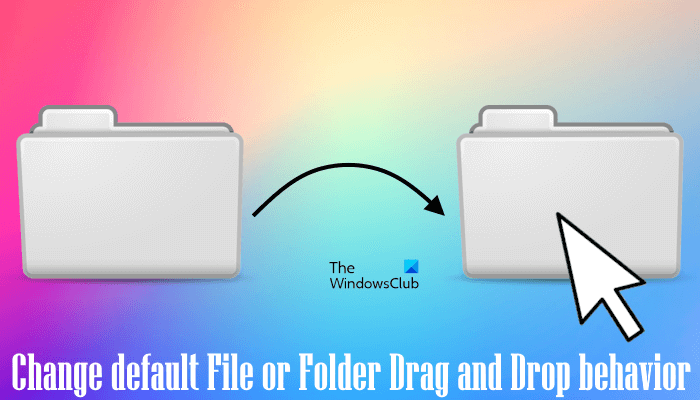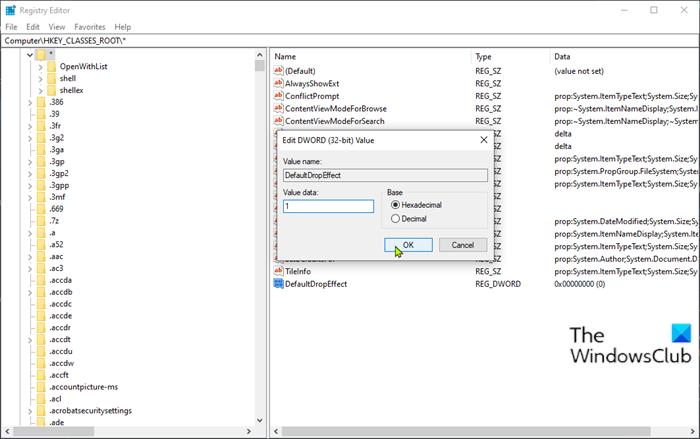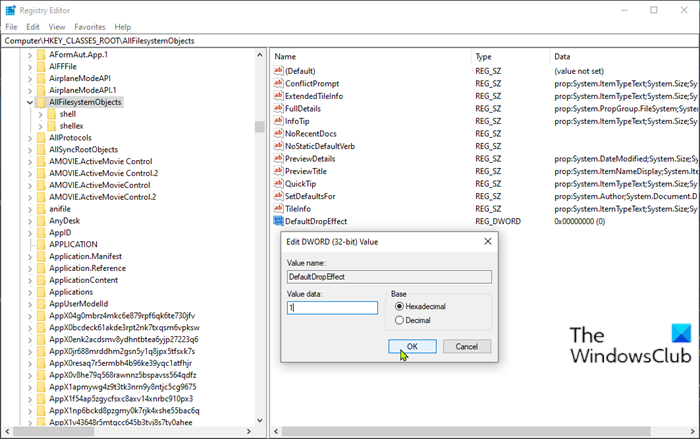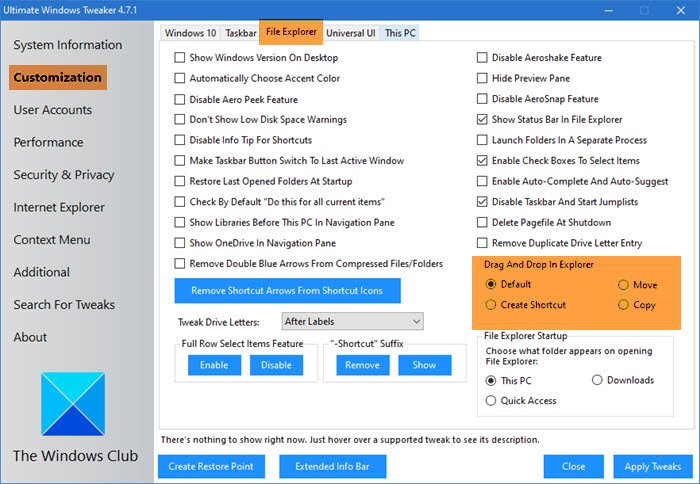Windows 11/10 has two default actions when you drag and drop a file or folder into a new destination in File Explorer; Copy or Move, depending on the target. In this post, we will show you how to change the default File or Folder drag-and-drop behavior on Windows 11/10 using a simple registry hack.

Change default File or Folder Drag and Drop behavior
By default, Windows copies anything you Drag and Drop to a directory on a different drive and moves it if you drag and drop it to another folder on the current drive.
To force Windows 11/10 into changing the behavior to either copy or move, regardless of whether you’re dragging items onto the same or different drives, you will need to edit two registry entries. Follow the guidelines outlined below.
Since this is a Registry operation, it is recommended that you back up the registry or create a system restore point as necessary precautionary measures. Once done, you can proceed as follows:

- Press Windows key + R to invoke the Run dialog.
- In the Run dialog box, type regedit and hit Enter to open Registry Editor.
- Navigate or jump to the registry hive location below:
HKEY_CLASSES_ROOT\*
- At the location, right-click the * folder on the left pane.
- Then choose New > DWORD (32-bit) Value.
- Name the value DefaultDropEffect.
Now, you’re going to modify that value to either always copy or always move files and folders as the default drop behavior. There are four values you can use that have different effects. While we’re only interested in two of the actions, they are as follows:
- Default action (0): Let Windows decide whether to copy or move files and folders when you drag and drop them into place.
- Always copy (1): A copy of the file or folder will always be placed in the destination.
- Always move (2): The file or folder will move to the destination.
- Always create a shortcut (4): A link to the original file or folder will always be placed in the destination.
Now, double-click the newly created DefaultDropEffect value to edit its properties.
In the properties window, enter either a 1 or 2 in the Value data field, depending on whether you always want to copy or move files or folders. For this example, we will use 1 to always copy files or folders.
Click OK to apply changes.
- Next, navigate or jump to the registry path below:
HKEY_CLASSES_ROOT\AllFilesystemObjects

- At the location, on the left pane, right-click the AllFilesystemObjects folder.
- Then choose New > DWORD (32-bit) Value.
- Name the new DWORD DefaultDropEffect.
- Now, double-click the newly created DefaultDropEffect value to edit its properties.
- In the properties window, input 1 in the Value data field.
- Click OK to save changes.
You can now exit the Registry Editor and the changes will take effect immediately, no need to restart your computer.
That’s it!
Tip: You can also in just one-click change the default File or Folder Drag and Drop behavior using our Ultimate Windows Tweaker.

This post will show you how to enable or disable Drag and Drop. If you do not want to disable drag and drop, then you can also add a confirmation box or change Drag and Drop sensitivity using freeware.
We hope you find this post useful.
How do I reset the default file type in Windows 11?
In Windows 11, you can select different apps as the default apps for different file types. For example, you can select your favorite media player to open MP4 files and other video files. If you want to reset the file types in Windows 11, you can do so by resetting the default apps.
How do I change file preferences in Windows 11?
In Windows 11, different programs are set as the default programs to open different files. You can also select a particular program to open a particular file in Windows 11. If you want to change the file preferences, you can do so by selecting a default app for that file. Open Windows 11 Settings and go to Apps > Default apps > Choose defaults by file types. You will see all the file extensions there. Click on a file extension for which you want to change the default app and select your preferred default app for that file extension.
Read next: What are MUI and PF files in Windows computers?